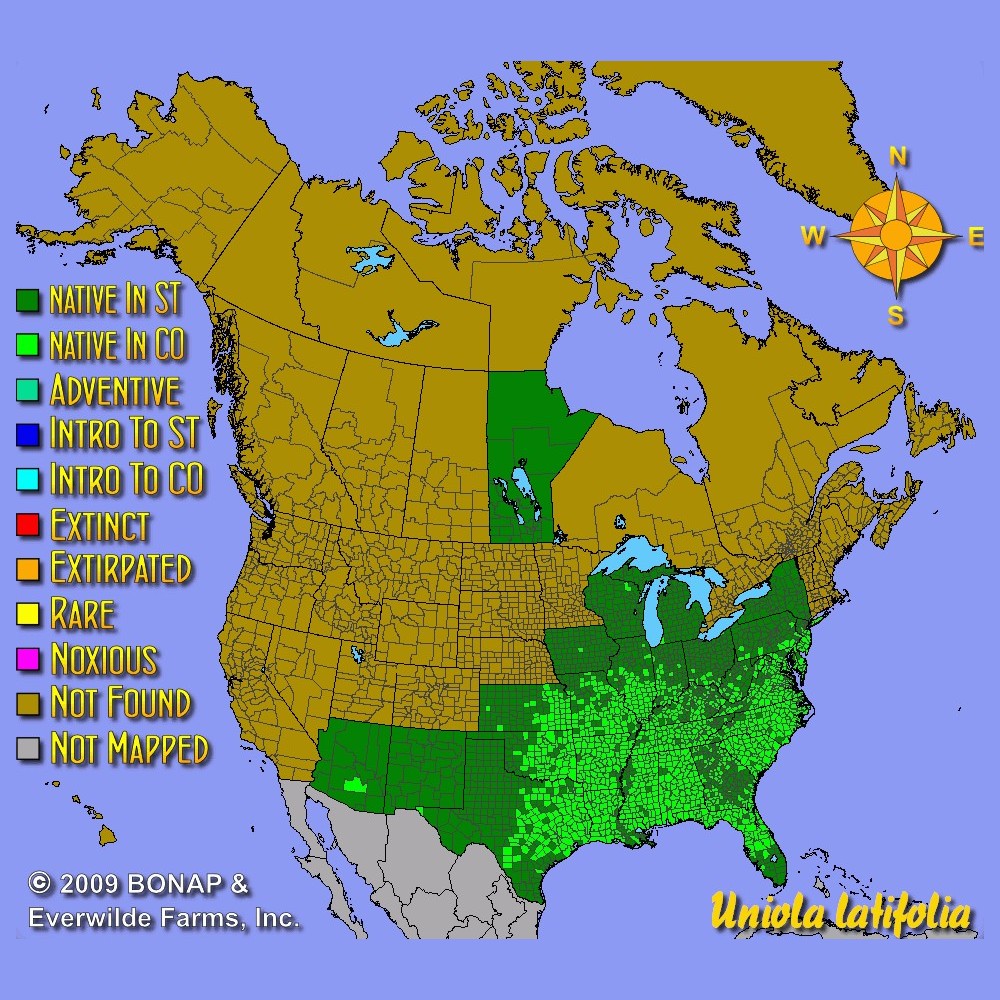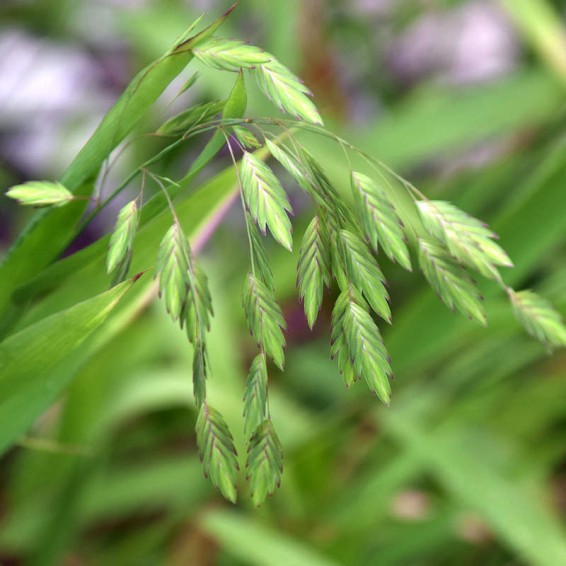River Oats Seeds
- HOW TO GROW
- FAST FACTS
- REVIEWS
HOW TO GROW
Sowing: Direct sow either in late fall or early spring. Press the seed into the surface of the soil, compacting the soil very firmly. For spring planting, mix the seeds with moist sand and store in the refrigerator for 60 days before planting. Keep the soil saturated until germination.
Growing: Water seedlings occasionally until they become established. This plant prefers moist soil, and does not do well in drought. It adapts well to various soil types such as sand and clay with adequate moisture. Though it grows rather slowly, this plant will spread by self-seeding and can become rather weedy in good growing conditions. Mature plants can be divided. This plant makes an very good choice for erosion control, wetland restoration, and strengthening stream banks. It is also a popular ornamental plant, and the seeds attract small birds.
Seed Saving: At the end of the season, the seed heads will begin to ripen. Strip the mature seed from the stem. Spread the seed out and allow it to dry completely, then store it in a cool, dry place.
FAST FACTS
Common Names: Northern Sea Oats, Spangle Grass, Indian Wood Oats, Broadleaf Uniola, Wild Oats, Inland Sea Oats
Latin Name: Uniola latifolia
Species Origin: US Native Grass or Sedge
Type: Native Grasses, Warm Season
Life Cycle: Perennial
USDA Zones: 5, 6, 7, 8, 9
US Regions: Arid/Desert, Plains/Texas, Midwest, Northeast, Southeast
Seeds per Ounce: 7,800
Stratification: Cold/Wet for 4 Weeks
Germination Ease: Stratify 4 Weeks
Sunlight: Part Sun
Height: 36 Inches
Color: Green, Brown
Bloom Season: Blooms Late Summer, Blooms Early Fall, Blooms Late Fall
Seaside Oats are grown in upscale Gaylord Resort
I already succeeded with transplanting potted Seaside Oats in our shaded area 3 years ago. Everwilde Farm has so many choices when it comes to native seeds, so I was delighted to buy some of these to be scattered around, mimicking the nature, to see if any of them will germinate like other native grasses. The seed heads are certainly beautiful in the wild or in the garden.
Strong Growth
Despite daily temps of 108+ degrees daily, these seeds did not show adverse effects when germinating. My tortoise will be happy soon when enjoying this grass.
Fast delivery
Excited to plant these in a few weeks! Thanks for sending so quickly.
DESCRIPTION

HOW TO GROW
Sowing: Direct sow either in late fall or early spring. Press the seed into the surface of the soil, compacting the soil very firmly. For spring planting, mix the seeds with moist sand and store in the refrigerator for 60 days before planting. Keep the soil saturated until germination.
Growing: Water seedlings occasionally until they become established. This plant prefers moist soil, and does not do well in drought. It adapts well to various soil types such as sand and clay with adequate moisture. Though it grows rather slowly, this plant will spread by self-seeding and can become rather weedy in good growing conditions. Mature plants can be divided. This plant makes an very good choice for erosion control, wetland restoration, and strengthening stream banks. It is also a popular ornamental plant, and the seeds attract small birds.
Seed Saving: At the end of the season, the seed heads will begin to ripen. Strip the mature seed from the stem. Spread the seed out and allow it to dry completely, then store it in a cool, dry place.
FAST FACTS
Common Names: Northern Sea Oats, Spangle Grass, Indian Wood Oats, Broadleaf Uniola, Wild Oats, Inland Sea Oats
Latin Name: Uniola latifolia
Species Origin: US Native Grass or Sedge
Type: Native Grasses, Warm Season
Life Cycle: Perennial
USDA Zones: 5, 6, 7, 8, 9
US Regions: Arid/Desert, Plains/Texas, Midwest, Northeast, Southeast
Seeds per Ounce: 7,800
Stratification: Cold/Wet for 4 Weeks
Germination Ease: Stratify 4 Weeks
Sunlight: Part Sun
Height: 36 Inches
Color: Green, Brown
Bloom Season: Blooms Late Summer, Blooms Early Fall, Blooms Late Fall
Reviews
Review
Seaside Oats are grown in upscale Gaylord Resort
I already succeeded with transplanting potted Seaside Oats in our shaded area 3 years ago. Everwilde Farm has so many choices when it comes to native seeds, so I was delighted to buy some of these to be scattered around, mimicking the nature, to see if any of them will germinate like other native grasses. The seed heads are certainly beautiful in the wild or in the garden.
Review
Strong Growth
Despite daily temps of 108+ degrees daily, these seeds did not show adverse effects when germinating. My tortoise will be happy soon when enjoying this grass.
Review
Fast delivery
Excited to plant these in a few weeks! Thanks for sending so quickly.




